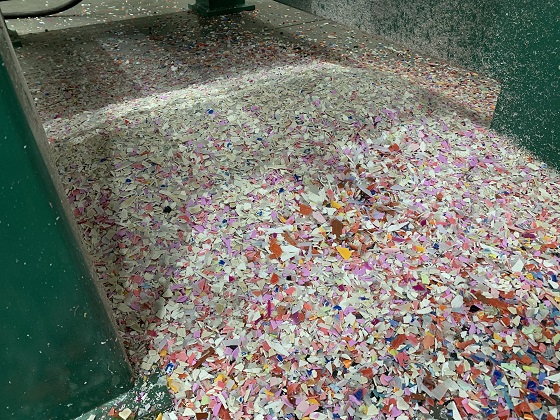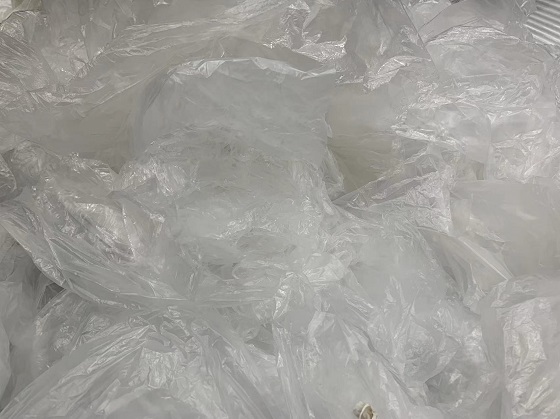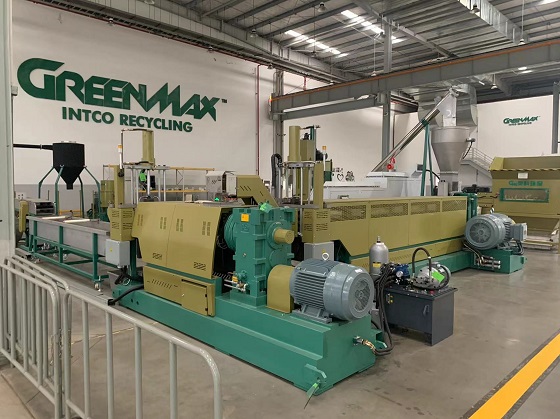How to Recycle Low Density Polyethylene (LDPE)
What is LDPE?
LDPE is a thermoplastic made from the monomer ethylene. It's a versatile and typically used polymer to produce different consumer, commercial, and industrial products. LDPE was the first polyethylene to be produced during the 1930s and is considered a clean and safe plastic with plastic code number 4.
As the name recommends, LDPE differs from HDPE as it has a lower density. It's not as solid but is thinner, extra malleable, has greater transparency, and has a lower melting point. Some of the key properties of LDPE are that it:
- Has a low density for a lightweight feel
- Is durable and flexible
- Has a high impact resistance and doesn’t shatter easily
- Resists acids, bases, oils, and many chemicals
- Doesn’t absorb water easily or release chemicals, making it ideal for food packaging

Is LDPE recyclable?
LDPE is recyclable. Nonetheless, rigid LDPE products are a lot easier to recycle than flexible and soft variations of plastic. Therefore, some local recycling centers only accept rigid LDPE products for recycling and not soft types, such as cling film. This is because they’re more likely to be contaminated and can get caught in recycling machinery.
LDPE has plastic code 4 and is accepted in a lot of residential recycling containers. However, you need to check with your local council initially as some have constraints on recycling particular LDPE products. For LDPE plastic bags you could need to take them to a particular carrier bag recycling point located in lots of supermarkets.

How is LDPE recycled?
Rigid and soft LDPE plastics are normally separated before recycling. Soft LDPE film is typically sorted by grade to ensure high-grade material output. You can store all types of LDPE and other plastic waste together on site however, as it will certainly be sorted at the recycling center before processing.
The general process to recycle LDPE includes:
Sorting-- once your waste LDPE plastic gets to the recycling center it's sorted by plastic kind and quality. Usually soft and rigid LDPE products will certainly be separated and sent for recycling separately.Cleaning-- great deals of LDPE film, packaging, and various other products might be contaminated with food, labels, and stickers. They're cleaned up thoroughly to get rid of these and then dried.
Shredding/chewing-- slim LDPE can obtain captured in the teeth of some recycling machines, so they're sent out to specialist LDPE recycling machines. These chew out and shred the plastic into little pieces.
Melting and molding-- the shredded LDPE is then heated up to temperatures in between 106 ° C and 112 ° C and melted, before being molded into plastic pellets.
Making new products-- these pellets are often combined with small amounts of virgin LDPE and made use of to create brand-new recycled LDPE items such as compost bins, paneling, and bin bags.
What Are the Benefits of Recycling LDPE?
Past reducing waste and developing a cleaner world, there are sensible advantages for companies that make the effort to recycle LDPE film:
Reducing waste costs: When you recycle your LDPE, you're taking it out of the garbage stream and reducing the volume of waste that obtains eliminated from your facility. This typically indicates much less trash that would bring up your waste collection costs. Several recycling companies will certainly help establish and organize a recycling program at your facility and buy your recycled LDPE film.
Lowering energy need: Because LDPE is derived from natural gases, it uses less energy to produce and recycle compared to corrugate.
Doing your part: If you’ve wondered how much LDPE is recycled, the answer is "not a lot." Back in 2015, the Environmental Protection Agency (EPA) launched information explaining simply 13% of all LDPE or LLDPE containers and packaging were later recycled. Plastic Recycling technology is rapidly changing, but even the most advanced technology doesn’t help unless you recycle your LDPE.
Graining reputational advantages: Being an environment-friendly company can imply a whole lot for your identity. The more recycled materials you can promote, the better you aim to environmentally friendly consumers.

Using GREENMAX Pelletizer Machine to Recycle LDPE Film
The GREENMAX PE film pelletizer machine uses advanced technology to recycle PE film into a reusable raw material. The machine has the advantages of high efficiency, energy saving and environmental protection, which can not only help you solve the waste disposal problem, but also save costs and create greater value.
The operation of PE film pelletizer machine is simple. It converts PE film waste into granules through heating, melting, extrusion and other processes. These granules can be directly used in the production of plastic products, such as plastic packaging, plastic tableware, plastic toys, etc. Compared with traditional waste treatment methods, PE film pelletizer machine has higher efficiency and better environmental performance.
PE film pelletizer machine also has the following advantages:
High efficiency and energy saving: Using advanced heating and extrusion technology, it can quickly convert PE film waste into granules with low energy consumption and high efficiency.
Simple operation: The machine adopts automatic control system, easy to operate.
Reliable quality: The use of high-quality materials and advanced manufacturing processes to ensure the quality and stability of the machine.
GREENMAX PE film pelletizer machine can be tailored to your needs. You can choose the machine model and specification that suits you according to your waste handling volume, production scale and other factors.
For more information, please contact with GREENMAX.
